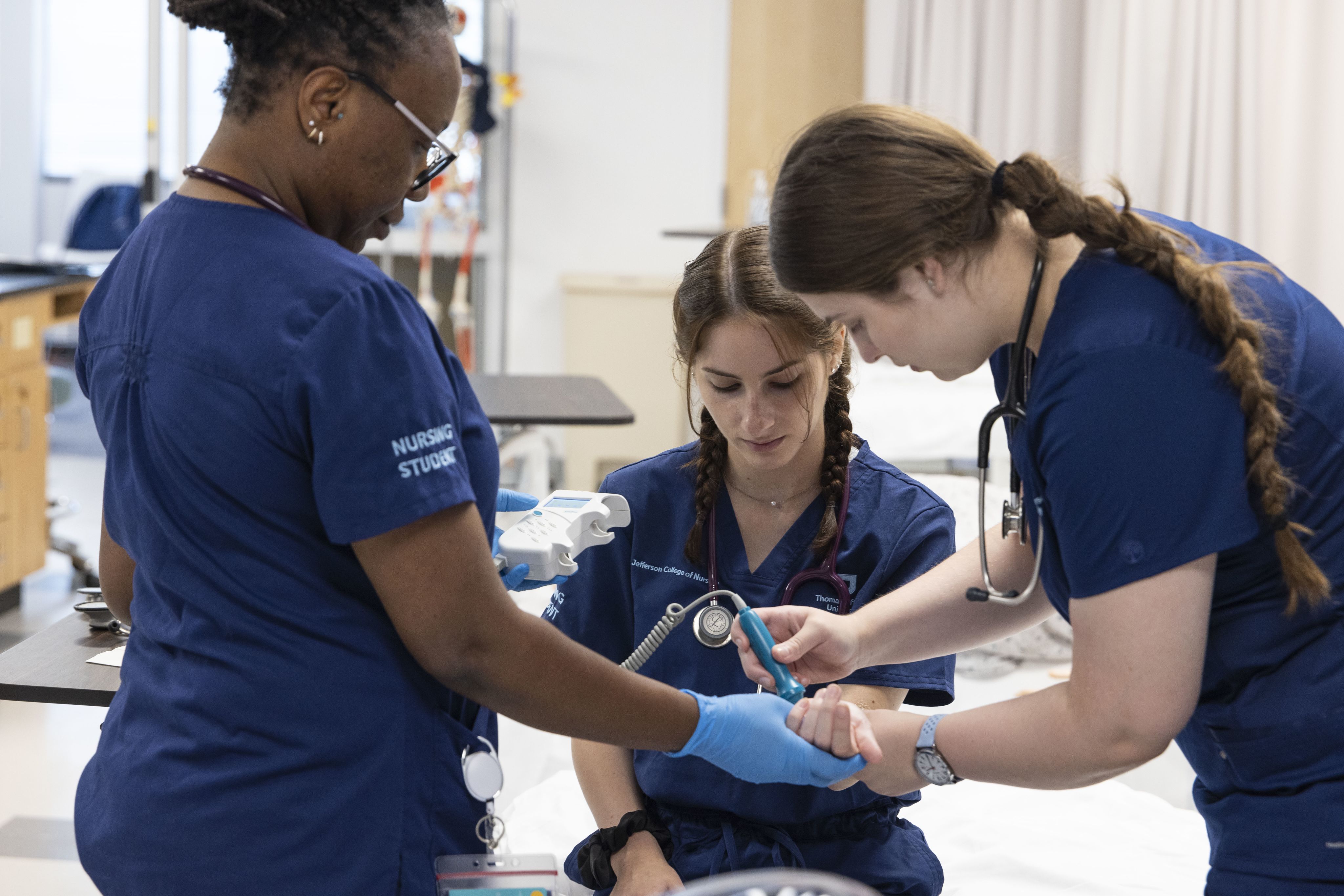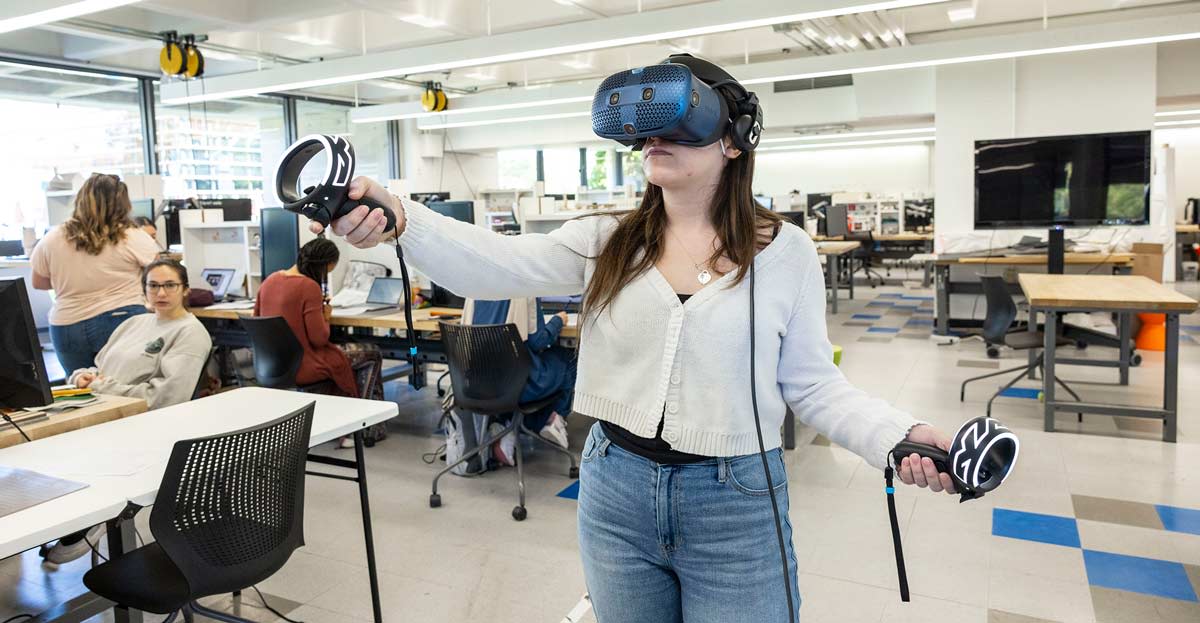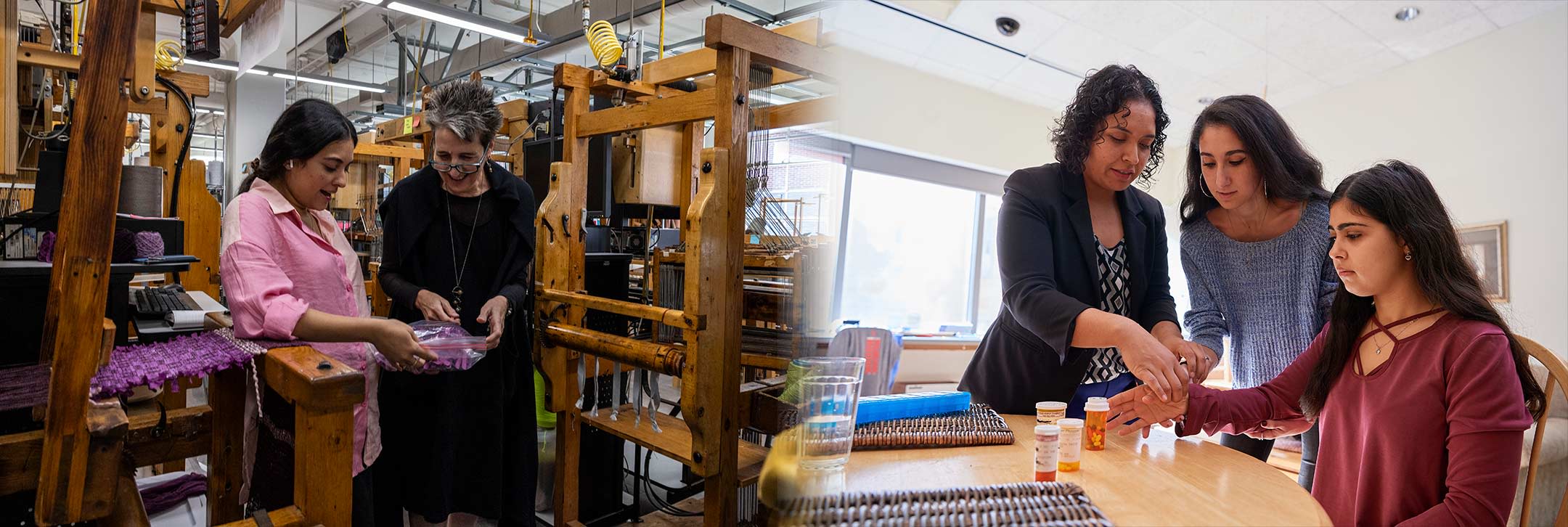Thomas Jefferson University is Pioneering Professions-Focused Education for a Dynamic Century

Metaphorically, Thomas Jefferson University president Susan C. Aldridge, PhD, has an amazing vista around her: Founded in 1824 as one of the nation’s first medical schools, the first to open a clinic for the poor, and in 1884 the first Textile School in the U.S., her institution enables her to view a 200-year legacy of leadership in higher education, research, clinical care and community engagement. Turning 180 degrees, Dr. Aldridge, the leader of one of the nation’s most innovative and effective institutions of profession-focused higher education, envisions Jefferson’s path forward, mapping out its opportunities and responsibilities to be a model for preparing graduates for career-long success in the dynamic, 21st century.
At this historical pivot point, Jefferson today is a national doctoral research university with 10 colleges and more than 200 academic programs. It’s also a powerhouse of research discovery, translation and application, scholarship and clinical investigation.
Dr. Aldridge is exactly the right leader at the right time. An accomplished higher education executive, strategist and futurist, she previously served as President of the University of Maryland Global Campus, President of Drexel University Online, and Vice Chancellor of Troy University. She was a member of the Jefferson Board of Trustees when she accepted appointment as interim president in June 2023, and was formally named president a year later.
“People have asked me why I took on a university presidency at this time, when higher education is experiencing tectonic shifts that are shaking the foundations of hundreds of colleges and universities,” Dr. Aldridge says.
“My answer is this: Our goal at Jefferson is to redefine ‘possible,’ and that’s exactly what’s called for in higher education today. The world desperately needs what our institutions are best-positioned to offer: New knowledge and the capacity to prepare the skilled and adaptable workforce required to apply that knowledge — enabling them to help solve complex, thorny global challenges.”
A Focus on the Future
The post-World War II model of higher education served well for many decades, Dr. Aldridge observes, and its graduates drove extraordinary advances in the life and physical sciences, engineering, architecture, design, medicine and public health and biomedical research. “But that model is untenable in this century,” she explains. “Today, universities must be flexible and innovative, creative and courageous. We must stay aligned with society’s evolving needs — ensuring that our graduates have the kinds of knowledge, skills and personal capacities they need to succeed for decades to come.”
Judging by some key metrics, Jefferson is doing just that: In the first year after earning their bachelor’s degree, 97% of Jefferson graduates are employed in their field or have been accepted to graduate school. Unlike most U.S. colleges and universities, Jefferson’s admissions are growing and it’s been launching new degree programs. Dr. Aldridge attributes its student-success rates and program growth to the university’s future-focused and award-winning model for educating professionals, its commitment to pedagogical innovation that leverages both new technologies and the science of cognition and learning, and to dedicated faculty who excel in both their classrooms and their professions.
Jefferson has another advantage: It’s one of the few multifaceted universities closely allied with a major academic health system and a non-profit health insurer. “The close relationship between the university, Jefferson Health and Jefferson Health Plans creates myriad opportunities for students’ hands-on engagement in professional activities and research,” Dr. Aldridge explains. “Those opportunities are not just in biomedical disciplines, they extend to students in fields ranging from industrial and textile design to arts and humanities to business and public policy.”


Video: This is Thomas Jefferson University

Leveraging AI in Higher Education
Having previously led the development of global online programs at two major universities, Dr. Aldridge has deep experience in guiding higher education’s adaptation to — and adoption of — major technology shifts. Now, she is a thought leader on how best to integrate computational science, machine learning and artificial intelligence into universities’ curriculum, teaching and overall operations.
“At Jefferson, we work hard to make sure our graduates are prepared for the future of work in an era of — I’ll call it — ubiquitous computation,” she explains. “We want them to be facile and comfortable working with new technological resources like AI; and teach them to balance technologies’ strengths and weaknesses by applying empathy, creativity, intuition and human caring.”
The university has also created resources that help faculty and researchers learn about and make best use of emerging computational science applications and technologies. Those include, for example, the AI and Deep Learning Networks Program and the AI Center of Excellence, which help faculty create novel content through machine learning. “But those are just down payments on what we know, intuitively, there will need to be a significant, long-term investment in new technical capacities and resources,” Dr. Aldridge notes.
In the near future, Jefferson will also launch new academic programs in general computation and data analysis and in discipline-specific areas such as computational biology. “We are also adding teaching on specific data-based capacities to a range of courses where computation may not previously have been relevant — capacities such as creating multimodel large language models and using prompt engineering to shape Generative AI models in real time.”
As a thought leader, Dr. Aldridge is also asking her peers this provocative question: How best can we proactively guide AI’s use in higher education and shape its impact on our students, faculty and institution — instead of just passively reacting to what comes next?
She believes the answer requires pursuing several specific objectives. “First, we must ensure that across our curriculum we are preparing today’s students to use AI in their careers — in particular, to add human-skills value that enables them to succeed in parallel with employers’ expanded use of AI. Second, we need to employ AI-based capacities to enhance the effectiveness of the education we deliver to our students — and to strengthen their capacity for meaningful, lifelong learning. Third, we must employ AI to address specific pedagogical and administrative challenges, ranging from improving learning outcomes to maintaining our campus facilities.”
Moving Forward
Achieving those objectives — alongside dealing with the slew of other challenges universities are grappling with these days — will not be easy. Which leads back to the question Dr. Aldridge is frequently asked: Why take on such an enormous task?
“This is a pivotal point in time for both higher education and a university, like ours, that possesses unique characteristics, strengths and opportunities,” she observes. “Jefferson’s mission of improving lives compels us to both positively impact the people, communities and those our graduates will serve, and help improve the quality of higher education and healthcare delivery for generations to come.
“Given that context, how could I not be excited about this role and the opportunity it presents to help shape the future?”
Leveraging AI in Higher Education
Having previously led the development of global online programs at two major universities, Dr. Aldridge has deep experience in guiding higher education’s adaptation to — and adoption of — major technology shifts. Now, she is a thought leader on how best to integrate computational science, machine learning and artificial intelligence into universities’ curriculum, teaching and overall operations.
“At Jefferson, we work hard to make sure our graduates are prepared for the future of work in an era of — I’ll call it — ubiquitous computation,” she explains. “We want them to be facile and comfortable working with new technological resources like AI; and teach them to balance technologies’ strengths and weaknesses by applying empathy, creativity, intuition and human caring.”
The university has also created resources that help faculty and researchers learn about and make best use of emerging computational science applications and technologies. Those include, for example, the AI and Deep Learning Networks Program and the AI Center of Excellence, which help faculty create novel content through machine learning. “But those are just down payments on what we know, intuitively, there will need to be a significant, long-term investment in new technical capacities and resources,” Dr. Aldridge notes.
In the near future, Jefferson will also launch new academic programs in general computation and data analysis and in discipline-specific areas such as computational biology. “We are also adding teaching on specific data-based capacities to a range of courses where computation may not previously have been relevant — capacities such as creating multimodel large language models and using prompt engineering to shape Generative AI models in real time.”
As a thought leader, Dr. Aldridge is also asking her peers this provocative question: How best can we proactively guide AI’s use in higher education and shape its impact on our students, faculty and institution — instead of just passively reacting to what comes next?
She believes the answer requires pursuing several specific objectives. “First, we must ensure that across our curriculum we are preparing today’s students to use AI in their careers — in particular, to add human-skills value that enables them to succeed in parallel with employers’ expanded use of AI. Second, we need to employ AI-based capacities to enhance the effectiveness of the education we deliver to our students — and to strengthen their capacity for meaningful, lifelong learning. Third, we must employ AI to address specific pedagogical and administrative challenges, ranging from improving learning outcomes to maintaining our campus facilities.”
Moving Forward
Achieving those objectives — alongside dealing with the slew of other challenges universities are grappling with these days — will not be easy. Which leads back to the question Dr. Aldridge is frequently asked: Why take on such an enormous task?
“This is a pivotal point in time for both higher education and a university, like ours, that possesses unique characteristics, strengths and opportunities,” she observes. “Jefferson’s mission of improving lives compels us to both positively impact the people, communities and students we serve today and help improve the quality of higher education and healthcare delivery for generations to come.
“Given that context, how could I not be excited about this role and the opportunity it presents to help shape the future?”
This content is sponsored and provided by Thomas Jefferson University and developed by Inside Higher Ed's sponsored content team. The editorial staff of Inside Higher Ed had no role in its creation.





